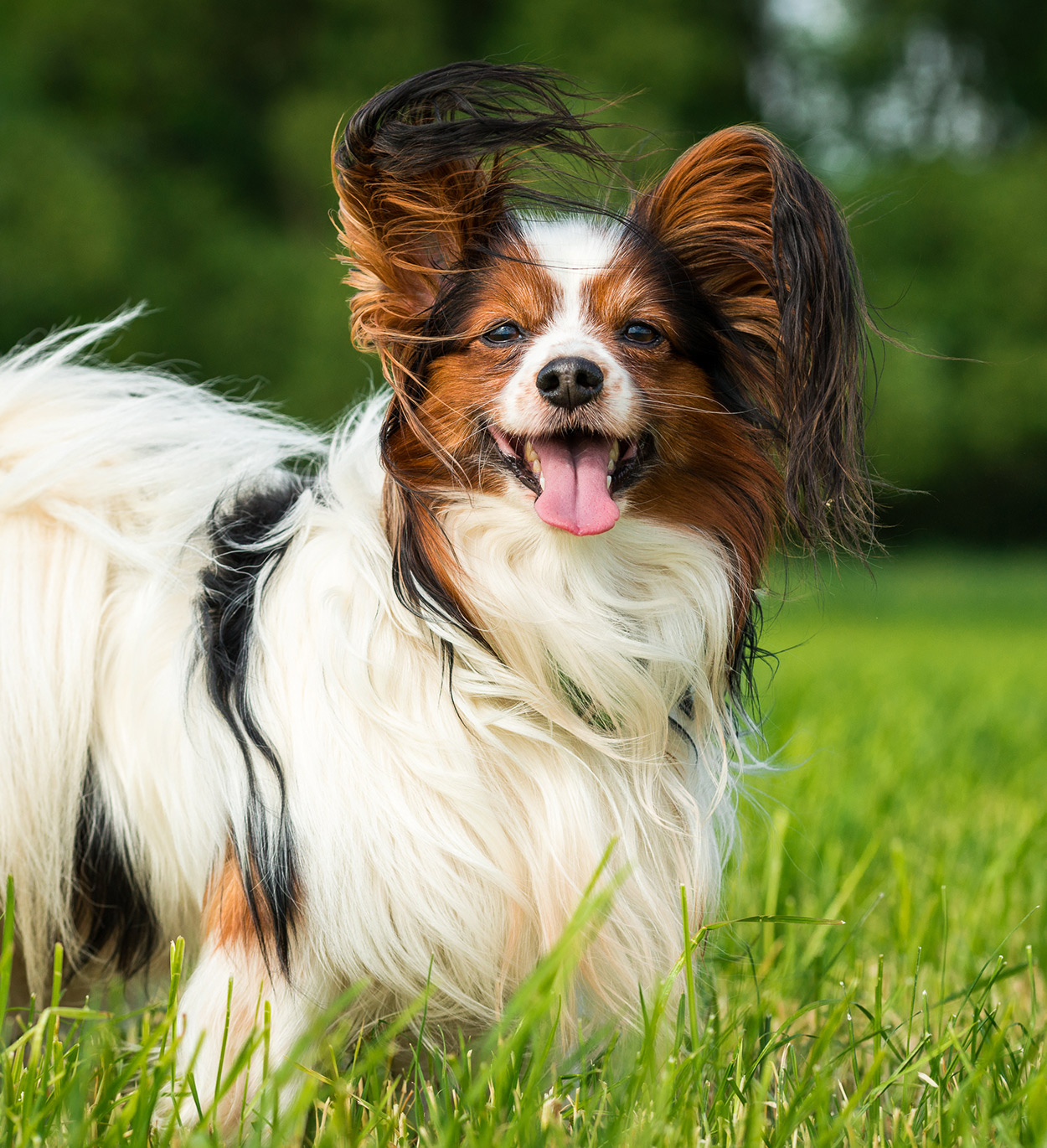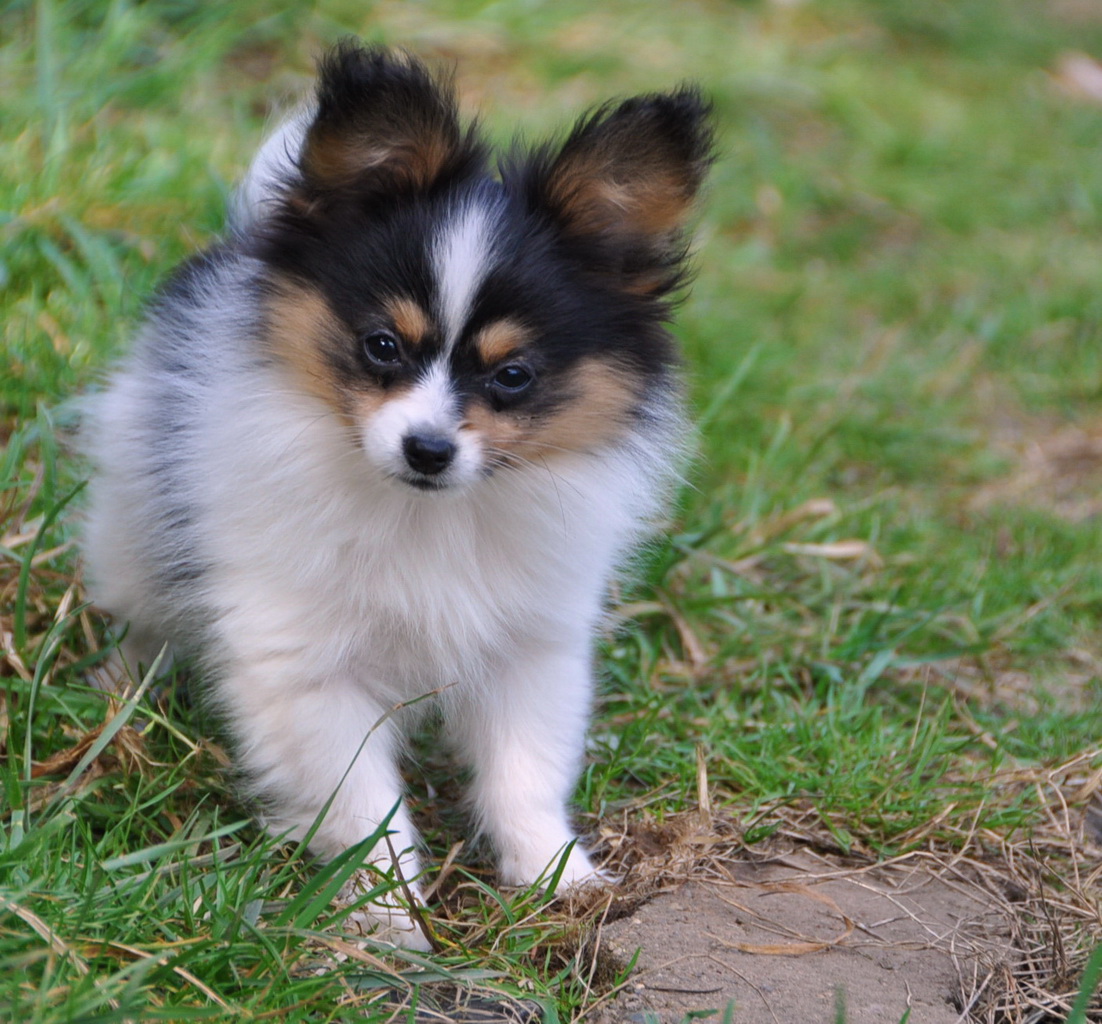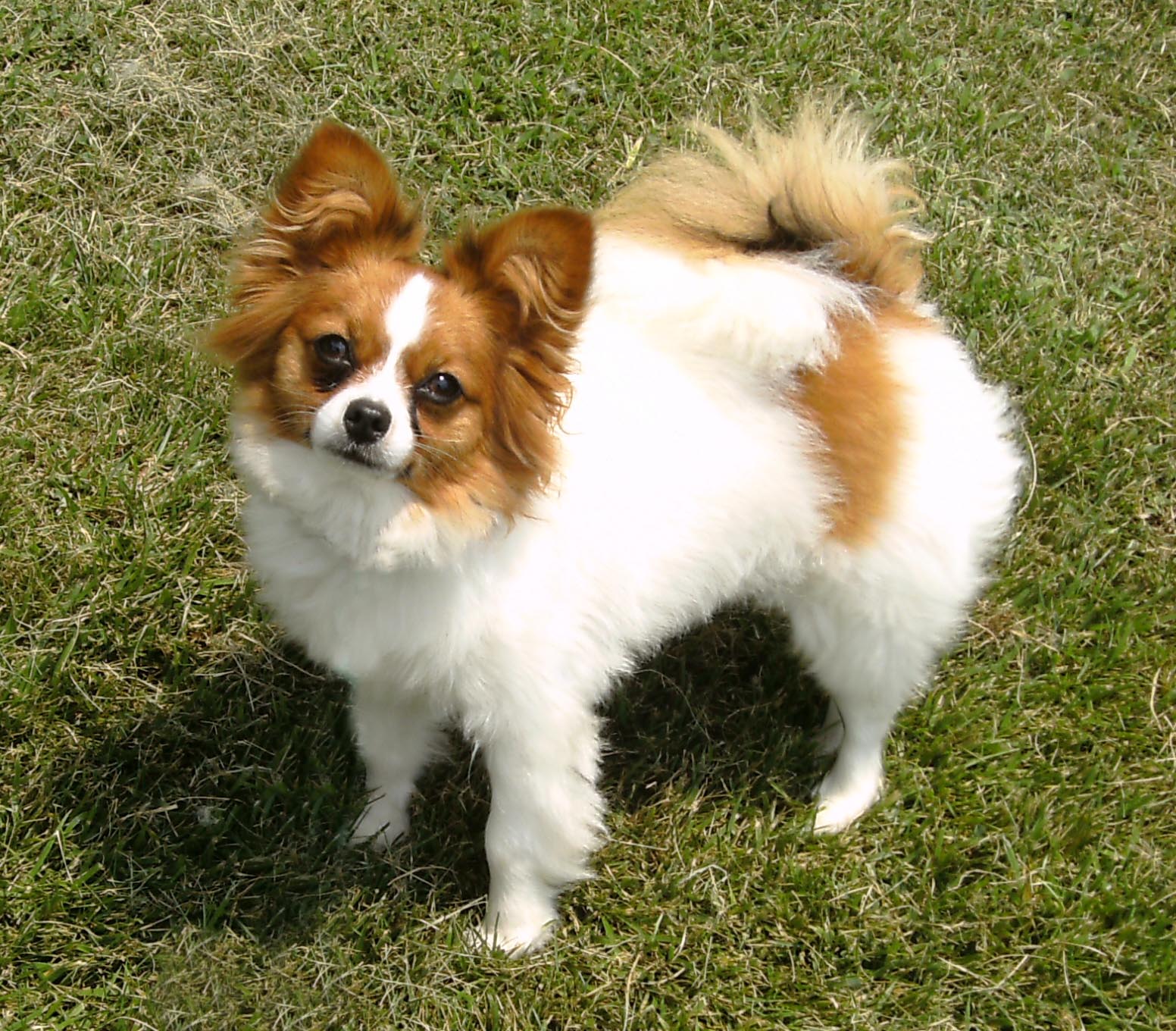
The Papillon is one of the oldest toy breeds in Europe, with origins dating back several centuries. The breed takes its name from the French word “papillon” meaning butterfly, a reference to its large, fringed, upright ears resembling a butterfly’s wings. A variation with dropped ears is known as the Phalène, meaning moth.
This elegant little dog can be seen in countless Renaissance paintings, particularly those by Titian and Rubens, accompanying European nobility. Bred primarily as companion animals, Papillons gained popularity among the French and Spanish courts. Marie Antoinette was famously fond of the breed, and it’s said that her Papillon accompanied her to the guillotine.
Recognized by the AKC in 1915, Papillons have retained their regal elegance while proving themselves in modern arenas like agility, obedience, and therapy work.
The Papillon is consistently ranked among the most popular toy breeds in the United States and many other countries. Its blend of intelligence, trainability, and charm has made it a favorite among competitors in dog sports and families alike.
Despite its delicate appearance, the Papillon is far from fragile. It's an agile, lively dog that thrives on attention and activity, winning fans with its sparkling personality and graceful movement.
The Papillon is instantly recognizable by its fine-boned elegance, flowing coat, and—of course—its large, wing-like ears.
Coat:
Single-layered, long, flowing, and silky. Lacks an undercoat, so shedding is minimal.
Color:
Always white with patches of any color (commonly red, black, or sable). The color must cover both ears.
Size:
• Height: 8–11 inches (20–28 cm)
• Weight: 5–10 lbs (2.3–4.5 kg)
Build:
Refined and lightweight, yet athletic and balanced.
Head and Eyes:
Small head with a slightly rounded skull and fine muzzle. Eyes are medium, dark, and expressive.
Ears:
Distinctively large and fringed. Erect (Papillon) or dropped (Phalène). Both varieties are recognized.
The Papillon is a big personality in a small body. Bold, smart, and eager to engage, this breed offers the perfect mix of companionship and liveliness.
Highly Intelligent:
Ranks among the smartest of toy breeds. Quick learners who enjoy training and mental challenges.
Friendly and Alert:
Sociable with people and other animals. May be reserved with strangers but rarely aggressive.
Active and Playful:
Not a lapdog in the traditional sense—Papillons love to move, explore, and play.
Vocal Watchdogs:
Though small, they take their watchdog duties seriously. Expect alert barking when someone’s at the door.
Sensitive and Affectionate:
Thrives on human interaction. Bonds closely with their family.

Smart and Trainable:
Regularly seen in the top ranks of obedience and agility competitions. Enjoys mental stimulation and learning tricks.
Great Family Dog:
Loves people of all ages. Does well with respectful children and other pets.
Compact but Active:
Small enough for apartment living, but active enough for agility courses and long walks.
Elegant Yet Tough:
Looks dainty but is surprisingly sturdy for a toy breed.
Training:
Easy to train with positive reinforcement. Early socialization helps prevent excessive shyness or barking.
Exercise:
Needs daily mental and physical activity. Short walks, fetch, and puzzle toys are great outlets.
Grooming:
Low-maintenance coat despite its length. Brush a few times per week to keep it tangle-free. Regular ear cleaning is important.
Living Environment:
Adaptable to most home types. Can thrive in city apartments or rural homes as long as they get enough stimulation.
Papillons are generally healthy with a long lifespan (typically 14–16 years), but a few health concerns to watch for include:
• Patellar luxation
• Dental disease (common in toy breeds)
• Progressive retinal atrophy (PRA)
• Collapsed trachea
Regular vet care, dental hygiene, and a high-quality diet help keep your Papillon thriving for years.

Compared to the Chihuahua:
Papillons are more eager to train and less prone to nervousness. Both are small and portable, but Papillons are more outgoing and active.
Compared to the Pomeranian:
Poms have a denser coat and more independent streak. Papillons are more agile and less prone to bark excessively.
Compared to the Toy Poodle:
Both are intelligent and trainable. Papillons have a straighter coat and a bit more outgoing personality.
Choose a Papillon if:
• You want a small, smart dog who’s full of life
• You love agility, obedience, or training activities
• You want a dog that’s portable yet spirited
• You prefer a low-shedding toy breed with a silky coat
Not Ideal For:
• People seeking a purely low-energy lapdog
• Households that can’t offer daily mental stimulation
• Families with very young or rough children
The Papillon is a dazzling blend of elegance, brains, and enthusiasm. It’s the perfect choice for families, singles, and seniors who want an attentive, joyful companion that can keep up with their lifestyle—whether it's on a couch, in a show ring, or on the agility course. United Pet Club celebrates breeds like the Papillon that bring beauty and brilliance into everyday life.